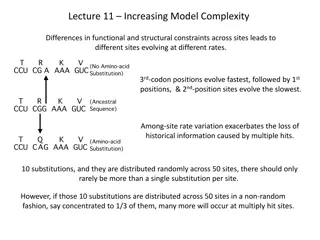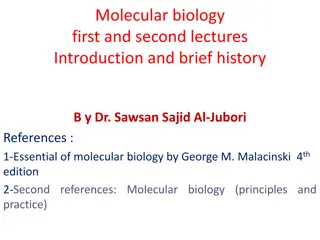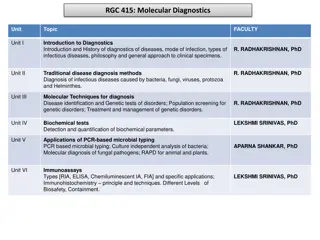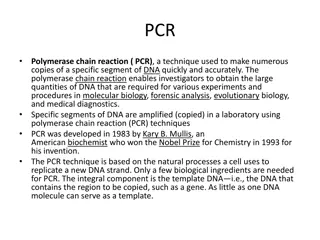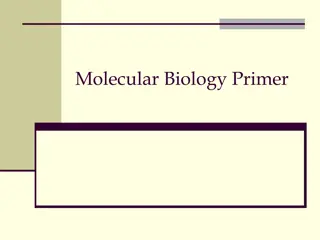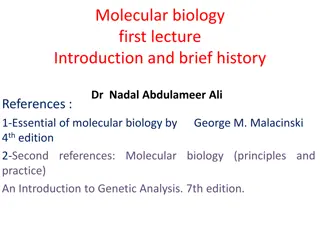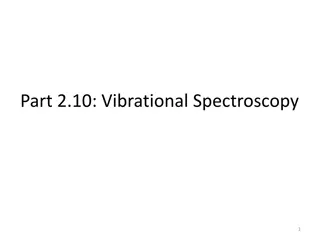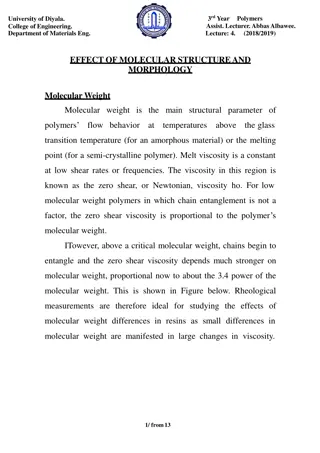Understanding Site-Directed Mutagenesis in Molecular Biology
Site-directed mutagenesis is a crucial molecular biology technique used to intentionally modify DNA sequences for research purposes. By synthesizing a short DNA primer containing the desired mutation, hybridizing it with the template DNA, and then extending it using a DNA polymerase, scientists can introduce specific changes into genes. Approaches like Kunkel's method and cassette mutagenesis offer various strategies for implementing this technique effectively.
Download Presentation

Please find below an Image/Link to download the presentation.
The content on the website is provided AS IS for your information and personal use only. It may not be sold, licensed, or shared on other websites without obtaining consent from the author. Download presentation by click this link. If you encounter any issues during the download, it is possible that the publisher has removed the file from their server.
E N D
Presentation Transcript
Site-directed mutagenesis IRSHAD; PHD
Site-directed mutagenesis is a molecular biology method that is used to make specific and intentional changes to the DNA sequence of a gene and any gene products. Also called site-specific mutagenesis mutagenesis, it is used for investigating the structure and biological activity of DNA, RNA, and protein molecules. Site-directed mutagenesis is one of the most important techniques in laboratory for introducing mutation into a DNA sequence. However, with decreasing costs of oligonucleotide synthesis, artificial gene synthesis is now occasionally used as an alternative to site-directed mutagenesis. oligonucleotide-directed or
Basic mechanism The basic procedure requires the synthesis of a short DNA primer. This synthetic primer contains the desired mutation and is complementary to the template DNAaround the mutation site so it can hybridize with the DNAin the gene of interest. The mutation may be a single base change (a point mutation), multiple base changes, deletion, or insertion. The single-strand primer is then extended using a DNApolymerase, which copies the rest of the gene. The gene thus copied contains the mutated site, and is then introduced into a host cell as a vector and cloned. Finally, mutants are selected by DNA sequencing to check that they contain the desired mutation.
Approaches in site-directed mutagenesis Kunkel's method: The DNA fragment to be mutated is inserted into a phagemid such as M13mp18/19 and is then transformed into an E. coli strain deficient in two enzymes, dUTPase (dut) and uracil deglycosidase (ung). Both enzymes are part of a DNA repair pathway The dUTPase deficiency prevents the breakdown of dUTP, resulting in a high level of dUTP in the cell. The uracil deglycosidase deficiency prevents the removal of uracil from newly synthesized DNA. As the double-mutant E. coli replicates the phage DNA, its enzymatic machinery may, therefore, misincorporate dUTP instead of dTTP, resulting in single-strand DNA that contains some uracils (ssUDNA).
The ssUDNA is extracted from the bacteriophage that is released into the medium, and then used An oligonucleotide containing the desired mutation is used for primer extension. The heteroduplex DNA that forms consists of one parental non-mutated strand containing dUTP and a mutated strand containing dTTP. The DNA is then transformed into an E. coli strain carrying the wildtype dut and ung genes. Here, the uracil-containing parental DNA strand is degraded, so that nearly all of the resulting DNAconsists of the mutated strand. as template for mutagenesis.
Cassette mutagenesis Unlike other methods, cassette mutagenesis need not involve primer extension using DNApolymerase. In this method, a fragment of DNAis synthesized, and then inserted into a plasmid. It involves the cleavage by a restriction enzyme at a site in the plasmid and subsequent ligation of a pair of complementary oligonucleotides containing the mutation in the gene of interest to the plasmid. Usually, the restriction enzymes that cut at the plasmid and the oligonucleotide are the same, permitting sticky ends of the plasmid and insert to ligate to one another. This method can generate mutants at close to 100% efficiency, but is limited by the availability of suitable restriction sites flanking the site that is to be mutated.
PCR site-directed mutagenesis The limitation of restriction sites in cassette mutagenesis may be overcome using polymerase chain reaction with oligonucleotide "primers", such that a larger fragment may be generated, covering two convenient restriction sites. The exponential amplification in PCR produces a fragment containing the desired mutation in sufficient quantity to be separate from the original, unmutated plasmid by gel electrophoresis, which may then be inserted in the original context using standard recombinant molecular biology techniques. There are many variations of the same technique. The simplest method places the mutation site toward one of the ends of the fragment whereby one of two oligonucleotides used for generating the fragment contains the mutation. This involves a single step of PCR, but still has the inherent problem of requiring a suitable restriction site near the mutation site unless a very long primer is used.



